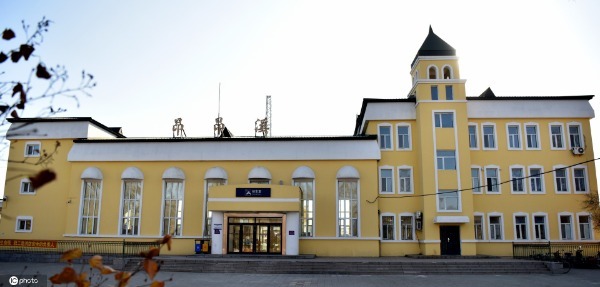Heilongjiang province: Luoxiya Avenue Historical and Cultural Block in Qiqihar's Angangxi district

Luoxiya Avenue Historical and Cultural Block in Qiqihar's Angangxi district
齐齐哈尔市昂昂溪区罗西亚大街历史文化街区
Angangxi, a geographical name derived from the Mongolian language, means the "hunting ground". The Angangxi Culture that bore distinctive characteristics of the northern fishing and hunting culture was created by ancient ancestors living along the shore of the Nenjiang River and later made a sensation around the world.
The block was formerly a residential area for the employees of the Chinese Eastern Railway built by the Russians. Its Russian-style houses are located on the one-kilometer long Luoxiya Avenue.
The houses, most in yellow color, are constructed in unified form but diversified style, reflecting specific memories of the ancient Angangxi people. The name of "Luoxiya" is the Chinese translation of the English word "Russia".
The Luoxiya Avenue block, built in 1901 in the late Qing Dynasty (1644-1911), is located in the north of the Tielu Road in Angangxi district of Qiqihar city in Northeast China's Heilongjiang province.
The neighborhood covers a land area of 101.12 hectares (1.01 sq km) and a construction area of 25,168 sq m. There are 125 Russian-style buildings, including eight office buildings and 117 residential buildings.

The surface of the walls are built by laying bricks that are formed with convex and concave floral ornaments to enrich the façade and the shapes of doors and windows.

Most of the walls are painted in yellow and other bright colors. There is often a separate area made of bricks and wood and with a sun room, which is decorated with exquisite and colorful wooden ornaments.
The historical block embraces the old railway station, the Chinese Eastern Railway Club, the Soviet Martyrs Cemetery, and the remains of churches. As the most complete and concentrated building complex representing Russian architecture along the Chinese Eastern Railway, it is now is a crucial national cultural relics protection site.





